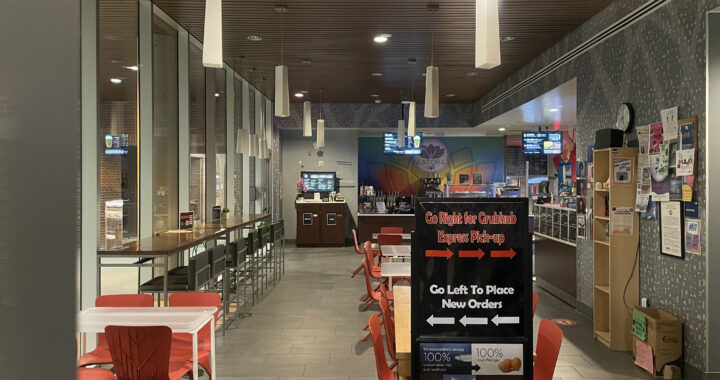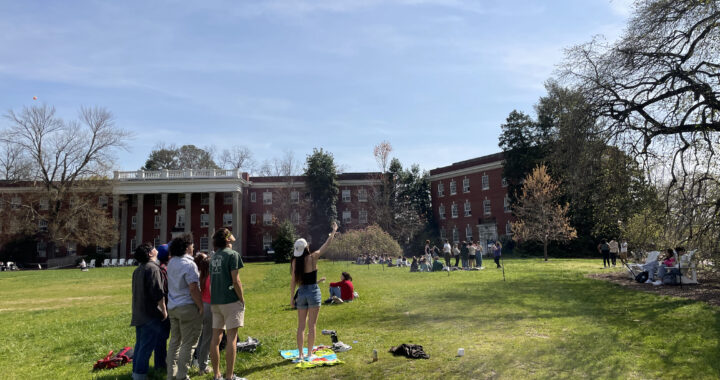Professors struggle with adjusting courses to online format
3 min read
Many professors use "Zoom" in order to continue class meetings online. (Meaghan McIntyre | The Blue & Gray Press)
By EMELIE WIEDNER
Staff Writer
The COVID-19 pandemic has caused many college campuses to shut down, forcing students and professors to transition to online classes. For many classes, this new transition has disrupted the flow of schedules; professors are no longer allowed to teach in classrooms which forced many of them to rewrite syllabi for the remainder of the spring semester and significantly alter the class format.
The decision to make the switch from in-person classes to online happened abruptly with only two days off. Many students and professors didn’t have time to prepare for the shift in the classroom dynamic. Students no longer have the advantage of being in a classroom and as Leslie Martin, a professor of sociology, put it, “The most exciting and rewarding part of this job, to me, is not about imparting information or even training on skills, it is going through the process of exploring ideas with students. That feels most real when we do it together, in real life. It can still happen remotely – it is not as much fun though.”
When asked what the hardest part about this new shutdown was, English professor Danny Tweedy said, “Simply put, not being in the classroom.”
Both professors addressed concerns with how this is going to affect students, and whether or not they would have reliable internet access outside of campus. “Creating a complete online class one must take into consideration that not all students have equal access to technology or equal demands/responsibilities based on family, etc,” said Tweedy.
Martin was also concerned about how students will have access to certain campus resources, like the open food pantry. “We’ve been trying to keep the Eagle Resource Closet open for those who need it, but I worry about food-insecure students.”
While these professors expressed their worries about how students will cope with this new online transition, they also had worries of their own, especially about rewriting a brand new syllabus. “It felt hard to make the shift in two days, and now three days in, I feel like I’m going to need to re-think it again. Now that we have all seen a glimpse of what having all of our class online is like – what is reasonable for us, for our students? Also – what’s a healthy balance for us, for our students? Thinking this through for the first time is really challenging,” said Martin.
Not all professors have experience teaching online classes or classes with online components. Martin said, “My own inexperience with diverse online teaching strategies has been an obstacle. I know I’m going to learn a lot, but the learning curve is pretty steep. But also trying to figure out what can be saved from the classroom community we’d created over half a semester, and what can be jettisoned. I still don’t know those answers.”
Some professors had an easier time with the in-person to online class transition if they were already utilizing online resources for the course.
“I was fortunate that most of my courses have transitioned to hybrid courses—in class discussion and presentations, online quizzes, discussion boards and submission of assignments,” Tweedy said.
While professors struggled in different ways when converting their classes to online, one common obstacle was not being able to be physically present with students in a traditional classroom setting.
While losing the remainder of the semester, the college experience, professor and student relationships, social interactions and community engagement is hard, hopefully students can take comfort in the fact that they still have caring professors who are trying their best to make the situation as easy as possible. After all, this transition is just as hard for them as it is for us.











